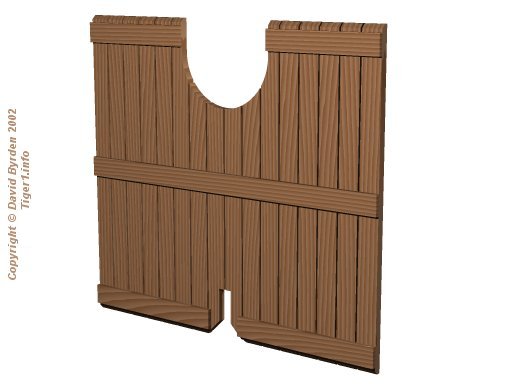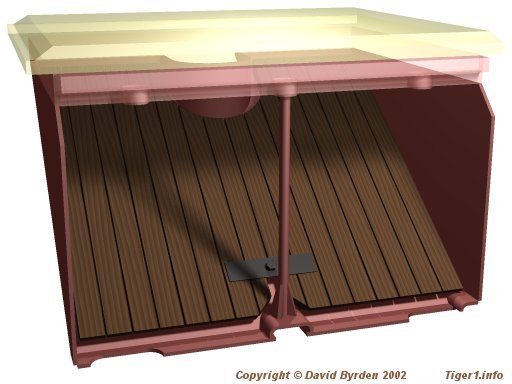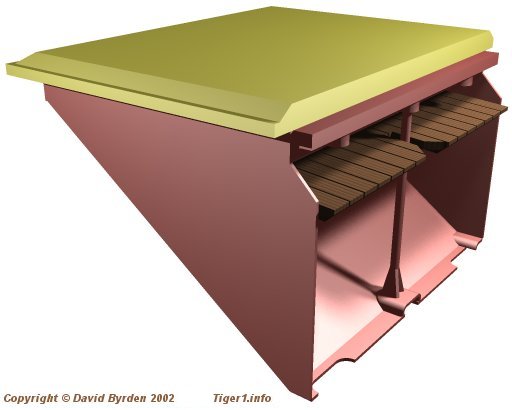About this detail of the Tiger

Starting in April 1944, a wooden cover was installed in the air inlet ducts. This prevented metal splash and bullets from entering the grilles on the hull top, hitting the metal ducts and ricocheting into the unprotected radiators which lay immediately behind the ducts.
Complete drawings of this wooden cover, with all dimensions, are published by Doyle & Jentz. The above drawing is based on their book, with one change; the drawing shows the lower crossbeam running all the way across the cover. I think this is an error and that there would have been a gap in it.

This model shows how the cover was fixed in the duct by a bolt and a flat plate near its bottom. The air inlet grille has been made transparent to show things better.

The wooden cover clearly could not be removed from the duct. However, it has a notch which seems to be designed so that the cover could be loosened and raised to expose the duct surface. Therefore, the crew could check for damage to the fuel tanks by removing only the rear metal grille and radiator. It's possible that they were able to leave the rear grille in place, and simply raise it on its hinges, then lift the radiator and fans out through the opening. I will be able to determine this when I've built the relevant models.
[1] DW to Tiger 1
